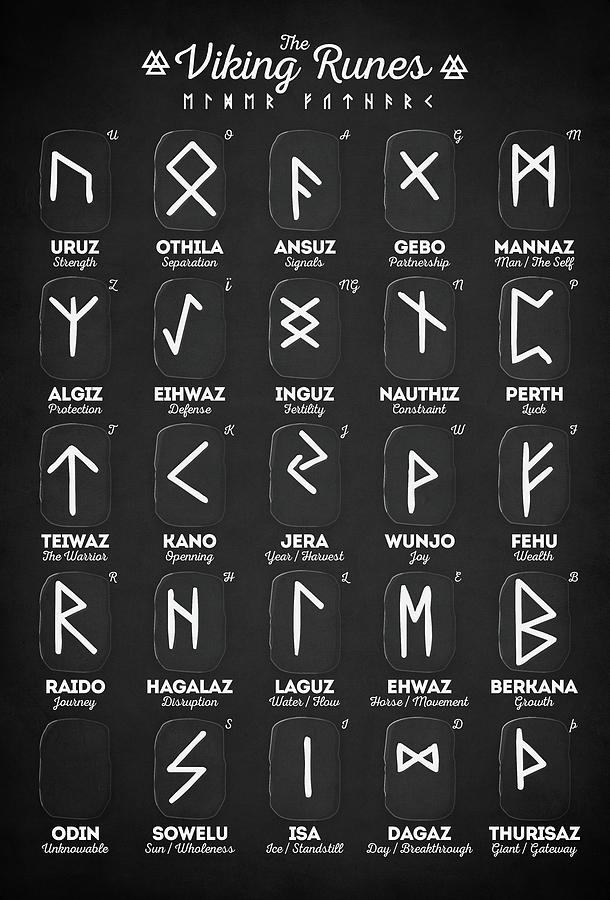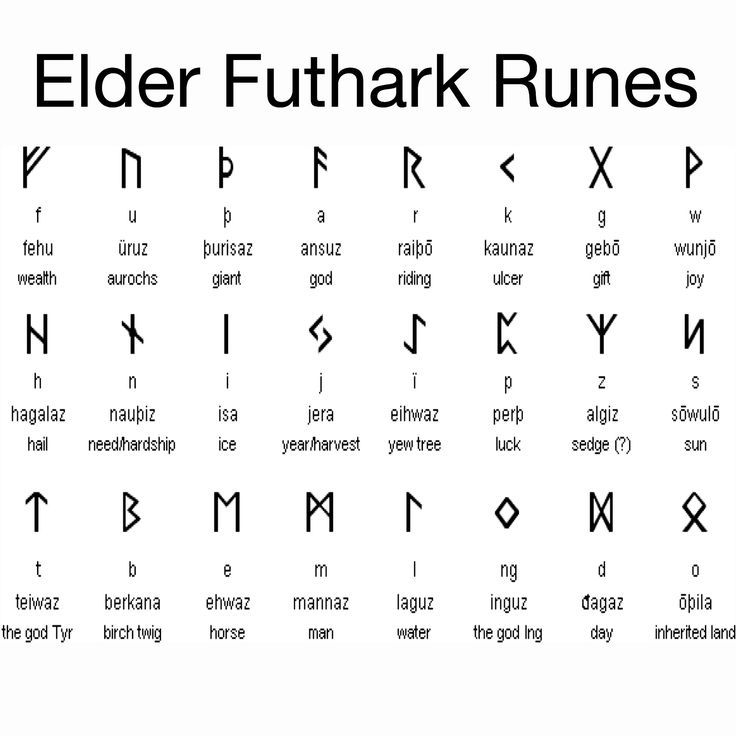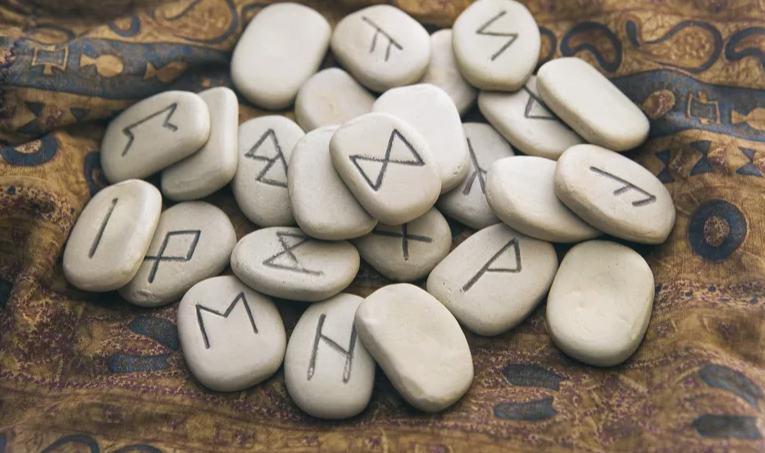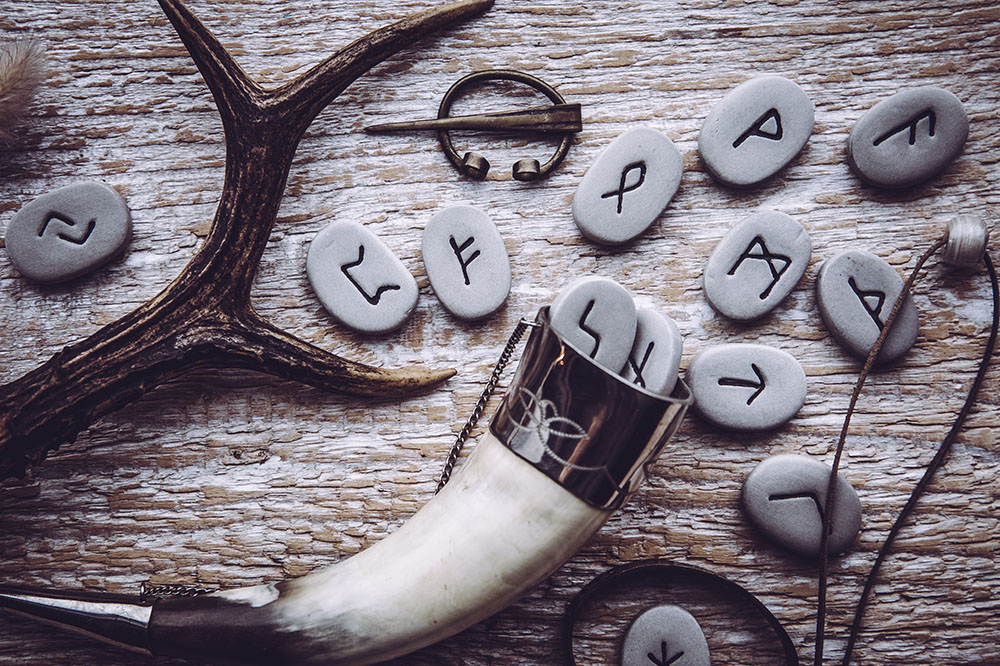By Dimitris Topalis,
Introduction
As it was said in a previous article about Norse mythology, we know that Viking Runes played a big part in Scandinavian mythology. In Scandinavian mythology, the Runes were symbols that sprang from the Well of Urd, which is the symbol of fate, and they were used by the Norns for controlling the fate of the branches of Yggdrasil, the Scandinavian Tree of Life, whose branches were the nine realms. Odin made the decision to hang and injure himself for nine days and nine nights because he knew that the Runes had a secret meaning and, if he could understand it, he would gain profound wisdom and power. The Runes were not used as letters as we have today, but they had meanings of the sort. Others were used to describe magic, others to describe nature, and even the personality traits that the Vikings had. Also, the Runes were a means to connect the natural with the supernatural. They also were used to honor the ancestors and to mark the graves of heroes. From that, we can understand how much the Runes were important. It is also known that the Scandinavians used to carve or cast Runes for a century. The Runes were usually cast on sticks or other objects such as wood, stones, even bones. Most Vikings could read and understand to some extent the meaning of the Runes, but the true study and understanding of the Runes was a task for the Gods.

Futharks
Vikings had a way of categorizing the Runes, and that way was the alphabet known as Futhark. The Elder Futhark is the oldest form of the runic alphabet and is the most known writing system of the Vikings. Inscriptions of the Elder Futhark can be found in objects such as jewelry, amulets, plate ware, tools, and weapons. The Elder Futhark has twenty-four runes and, over a few centuries, it became widely used amongst the Germanic tribes during the Migration period. Modern experts have termed the runic alphabets as Futharks based on the first six letters of the Elder Futhark. Those six letters of today are obviously F, U, TH, A, R, K. The Elder Futhark earns the title of the oldest runic alphabet because of a discovery of the Kylver Stone from Sweden, which dates around the year 400 (the Migration period). The Runestones that are recovered to this day are about fifty and most of them were raised by the gravesites that date to the Viking era of 950-1100 AC. In the Viking age (793-1066), the Elder Futhark was replaced with the Younger Futhark. The Younger Futhark has sixteen letters, which are eight less than the Elder. It is also noted that the fewer letters of the Younger Futhark were not a sign that the language was becoming easier, but the opposite; it was becoming more complicated than before.

The meaning of some Viking Runes
Nowadays, there is a list of Runes and what their interpretation is, and we are going to take a look at some. First, there is Tiwaz. Tiwaz was the rune that was used to describe Týr, the God of War, in Norse mythology. It was a Rune of victory and protection from harm and, most of the time, it was carved in amulets. That is one of the most known and used Runes, dating even to the earlier centuries of Runecraft. Berkana is another rune that is used to describe the birch Tree that was regarded as sacred and was associated with spring. It also ties with the Goddess of Spring, Idun. Laguz is one of the better-known runes and represents water and a source of fertility. The rune is also associated with the Vanir, specifically the god Njörðr, who was regarded as very wealthy and is associated with the sea and the fish. Inguz is a rune that is associated with the Norse god Freyr and represents fertility. The last rune that is going to be mentioned is Isa. This rune is associated with ice and its meaning is danger, as ice can cause a lot of damage.

Conclusion
The Runes are an essential part of Scandinavian mythology and a very interesting piece of history, as they play a big part in helping us understand Vikings and their beliefs. They also played a big part in the society and the everyday life of a Viking, as they were used to symbolize everything. What is also astonishing is the longevity of their use, dating from the Migration period all the way to 1066, which marks the end of the Viking age with the defeat of the Vikings in the Stanford Bridge. It is also a very dark subject in terms of the sources there are about them, as only fifty of them have been discovered. One of the most interesting facts about them is that they were not only letters, but they had a deeper meaning and symbolism. Last but not least, what is interesting is that they were used to describe the connection between the natural and the supernatural part of life.
References
- Bernard King, The Elements of the Runes, published by Elemental Books, 1993




